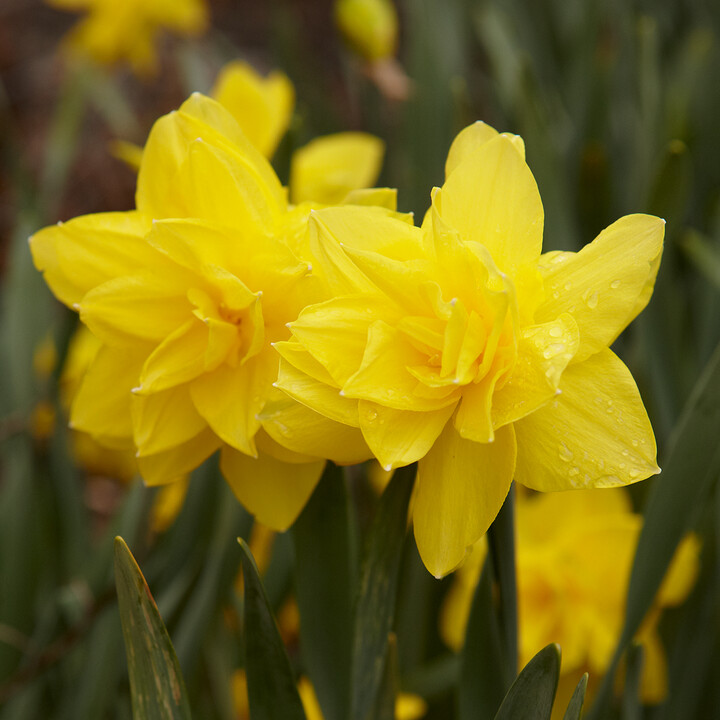Spring is finally here, and for me, that means it's time to be on the lookout for flowers popping up in gardens and parks. A lot of public gardens might be closed right now, but I can still keep an eye out for spring bulbs that are starting to come up now like tulips, hyacinths, and daffodils while I take a stroll around my neighborhood. It’s always a treat when I spot a patch of double daffodils though; they’re just as easy to grow as the regular varieties, but their flowers have extra petals that make them look almost like dahlias.

Most double varieties still have the six petals in a star shape that makes daffodils instantly recognizable. But in their centers, they have a second ring of petals (hence the term "double") or extra frilly cups. Like double tulips, when they bloom they're an instant showstopper.
How to Plant Double Daffodils
Like other varieties, the best time to plant double daffodils is in the fall, pretty much anytime before the ground freezes. You’ll want to plant them about 4 to 6 inches deep, and 4 to 10 inches apart (smaller bulbs can be as close as 4 inches, but larger bulbs need more space). After planting, water the bulbs well to get rid of any air pockets in the soil and encourage their roots to grow.

How to Grow Double Daffodils
Double daffodils are hardy in USDA Zones 3-9, so you'll only need to plant the bulbs once, and they should come back each spring for decades. Like regular daffodils, they’ll grow best in rich, well-drained soil; the bulbs can rot if they’re left sitting in water, so good drainage is a must. The plants also need full sun to flower, so make sure you’re growing them in a spot where they’ll get at least six hours of direct sunlight every day. Usually, double varieties will bloom in mid- to late spring, a little later than regular daffodils.
Part of their easy care means you don’t have to worry about deadheading once the blooms start to wilt. Just let them die back naturally, and let the foliage grow freely (this helps replenish the bulbs so they can bloom again next year). Once the foliage starts to wither and turn yellow, cut it off close to the ground or gently pull out the loose leaves and stems and add them to your compost pile. If you start noticing that the blooms and foliage aren’t as vibrant or healthy after a few years, divide the plants by digging up the bulbs after the foliage dies back and replanting with more space between them.
Most varieties also have the advantage of being deer- and rabbit-resistant, so any hungry critters in your neighborhood will usually pass them by. You can also grow the bulbs in containers or force them indoors. For forcing, you’ll need to buy pre-chilled bulbs (or chill them yourself) in the fall or late winter; then, you can set the bulb on top of a jar or forcing vase filled with water. Or force in a pot by planting the bulbs so that the top third sticks out above the soil. Then keep the bulbs in a sunny spot and wait for the flowers to bloom.

Best Double Daffodil Varieties
Like regular daffodils, double varieties can bloom in bright, sunny yellow, pure white, blush pink, or light orange. Most will grow between 1 and 3 feet tall. One of the most popular varieties, ‘Tahiti’, has bright yellow petals with a few smaller orange petals near the center. The effect is almost like a tropical sunrise in your garden. ‘Tahiti’ has also won multiple awards, including the Wister Award from the American Daffodil Society and the Award of Garden Merit from the Royal Horticultural Society.

‘Flower Parade’ looks similar to ‘Tahiti,’ but it has paler, creamy white petals instead of yellow. And if you love the ultra-bright yellow-orange colors of the most common daffodils, ‘Queen’s Day’ has the same vibrant hues with the added beauty of double petals. Like ‘Queen’s Day,’ ‘Golden Ducat’ is another popular variety with sunny yellow flowers. When in bloom, its huge flowers can measure 4 inches across or more.